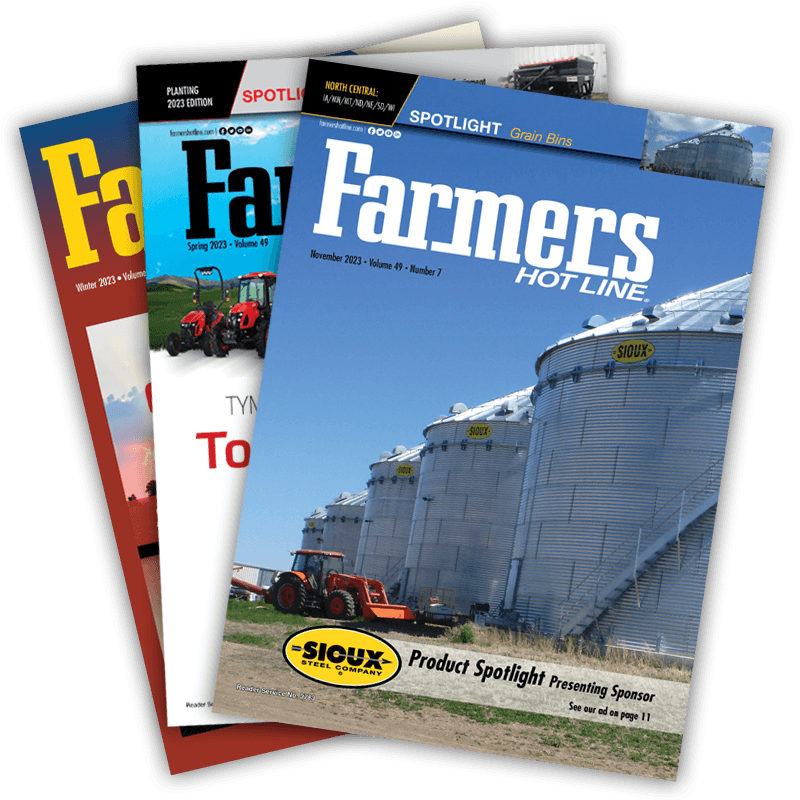Rolling Through the Rows
A High-Tech Solution to an Age-Old Challenge
As American farmers age, innovation and technology is becoming increasingly important.
Planting crops such as soybeans and corn in narrower rows offers farmers several benefits — yields more plants per acre, crowds out weeds earlier in the season and requires less herbicide use. However, walking through 15-inch rows is challenging, and most agricultural drones can’t spot every issue.
To address this need, two engineering students at Southern Illinois University (SIU) developed a robot as part of their senior design project. Their ingenious creation navigates tight spaces, allowing farmers to monitor their fields without damaging their crops.
Developing a Robot to Help Farmers Monitor Crops
According to Chao Lu, associate professor of Electrical, Computer and Biomedical Engineering at SIU, the idea for the project originated from the need to improve agricultural efficiency. As farming practices evolve, the challenge of monitoring crops effectively becomes more pressing.
“With Southern Illinois being home to extensive soybean and corn farms, we saw an opportunity to use robotics and AI (artificial intelligence) to address this challenge, creating a robot that could help farmers inspect crops like soybeans without having to physically walk through fields,” he said.
The project received an $18,000 seed grant that was used to gather essential resources to build the prototype, purchase necessary components and cover developmental costs. And, according to Lu, the grant allowed the students, Curtis Shuman and Cameron Schwartzberg, to focus on refining the design, building a working model and addressing technical challenges, ultimately contributing to the success of the project.
Together, Shuman and Schwartzberg used their individual strengths, working diligently to build the robot prototype. Shuman focused on the robot’s physical and electrical systems, while Schwartzberg handled the programming aspect of the project.
How The Robot Was Made
The robot’s design was influenced by the typical spacing between rows of soybean plants, information the team gathered from soybean professionals.
“Since many farmers plant crops with 15-inch row spacing, the robot needed to fit within the narrow gap to be effective in real-world conditions,” Lu said. “This design ensures it can operate without damaging crops while still performing its inspection tasks.”
The robot was built with a compact, 10-inch-wide design to fit between 15-inch rows of soybean plants. It uses a combination of cameras and image processing systems to monitor and track the plants’ condition.
“The camera mast is on a motor,” Shuman explained. “In the future, when the robot is autonomous, if the controller wants to take pictures closer to the ground, or higher up, they can automate the process by raising and lowering those cameras to reliably and repeatedly take the pictures they need.”
The prototype is controlled remotely with a handheld controller and Wi-Fi for real-time data collection. The students also used a combination of mechanical components, sensors and power management systems to ensure the robot could operate efficiently in the field.
To program the robot, Schwartzberg used a combination of operating systems, nodes and a small micro-controller, just to name a few. As complicated as that all seems, operating the robot is actually quite simple.
“It’s controlled remotely with an Xbox controller,” Schwartzberg explained. “The computer broadcasts a Wi-Fi signal. The user opens up a website on the computer and connects the Xbox controller to the computer. It drives just like a video game.”
Shuman said the robot is so simple and intuitive, just about anyone can operate it.
“You can literally hand somebody the controller and, for the most part, they just know how to use it.”
Challenges and Solutions
Throughout the design and building process, several challenges arose, but the team quickly overcame them.
“One major challenge was fitting all the required components within the small 10-inch width of the robot, which limited the space available for wiring and mechanical parts,” Lu said. “Another challenge arose when integrating the software and hardware, particularly with the operating system that initially caused system lag.”
Despite these challenges, Lu said the team solved these issues by switching to a more suitable operating system that allowed for better camera integration and real-time processing.
Another large constraint, according to Schwartzberg, was coming up with a design that would fit within the 15-inch row width:
“A lot of the research we had done on other solutions were based on research plots with much larger row widths. In this case, large tractors would just straddle the rows. So, we had to come up with a completely new design.”
Autonomy and Future Improvements
There are plans for future versions of the robot to operate autonomously.
“Achieving this will require advancements in AI and GPS navigator for the robot to navigate the field and analyze crop health without human intervention,” Lu explained. “Additionally, improvements in sensor technology and autonomous navigation systems will be necessary to handle complex field conditions.”
If given more time and resources, Shuman said he’d make several improvements to the current prototype.
“There’s a lot of little improvements mechanically and electronically I would like to make,” he said. “If we had more time and resources, we would ideally like to go with brushless motors, versus the current brush motor. They’re a lot more efficient, and a lot easier to use.”
The use of AI is also on the minds of the development team.
“AI could enable the robot to analyze images and data collected from the field to diagnose crop diseases, nutrient deficiencies and predict yields,” Lu said.
“By integrating machine learning algorithms, the robot could process vast amounts of data to identify patterns and provide insights that help farmers make more informed decisions about their crops.”
As AI and robotics continue to advance, these technologies could become essential tools for farmers, helping them optimize crop health, predict yields and make more informed decisions.
“The robot is just one part of the whole set of ideas. The other part is collecting the data and then going through that data and actually being able to see what is going on in the plants. In the future, that will be the main part of this idea,” Schwartzberg concluded.


